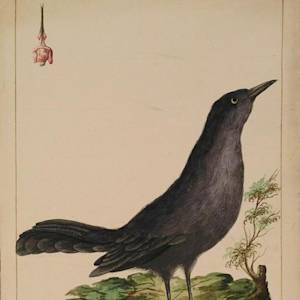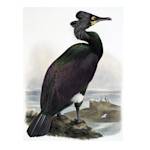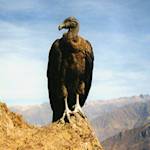Extinct In The Wild, Hawaiian Crow Or ʻalalā
2002 • Hawaii
Endemic to the Big Island, "they were once abundant in the lower forests of the western and southern sides of the island of Hawai‘i. When coffee and fruit farmers began shooting them in the 1890s, their population was already declining. By 1978, only 50 to 150 crows were believed to exist. Disease, predation by alien mammals, and loss of suitable habitat due to grazing and logging are also factors in the decline of the Hawaiian crow. The last two ‘alalā vanished from their territory in South Kona in 2002." The U.S. Fish and Wildlife Service is working with local groups to save and restore the ‘alalā. "In 1997, the Service acquired 5,300 acres of land in the South Kona District to establish the Kona Forest Unit of the Hakalau Forest National Wildlife Refuge. This refuge unit contains a significant amount of ‘alalā habitat. Efforts are ongoing to improve habitat conditions on the refuge and to release captive-reared ‘alalā again to the wild."
"Hawaiian Crow / Corvus Hawaiiensis / ‘Alalā (Cry like a Child)."Endangered Species in the Pacific Islands. U.S. Fish and Wildlife Service, 20 Sept. 2012. .
U.S. Fish and Wildlife Service. Hawaiian Crow (Corvus Hawaiiensis). 12 Feb. 2005. <https://en.wikipedia.org/wiki/File:Corvus_hawaiiensis_FWS.jpg>.


Learn about Maya Lin’s fifth and final memorial: a multi-platform science based artwork that presents an ecological history of our world - past, present, and future.

Discover ecological histories and stories of former abundance, loss, and recovery on the map of memory.

Learn how we can reduce our emissions and protect and restore species and habitats – around the world.

See how art can help us rethink the problems we face, and give us hope that each one of us can make a difference.

Help make a global memorial something personal and close to home. Share your stories of the natural world.


